Pictures › Wildlife › People & Places › Country Know-how › Food
THE BIG PICTURE
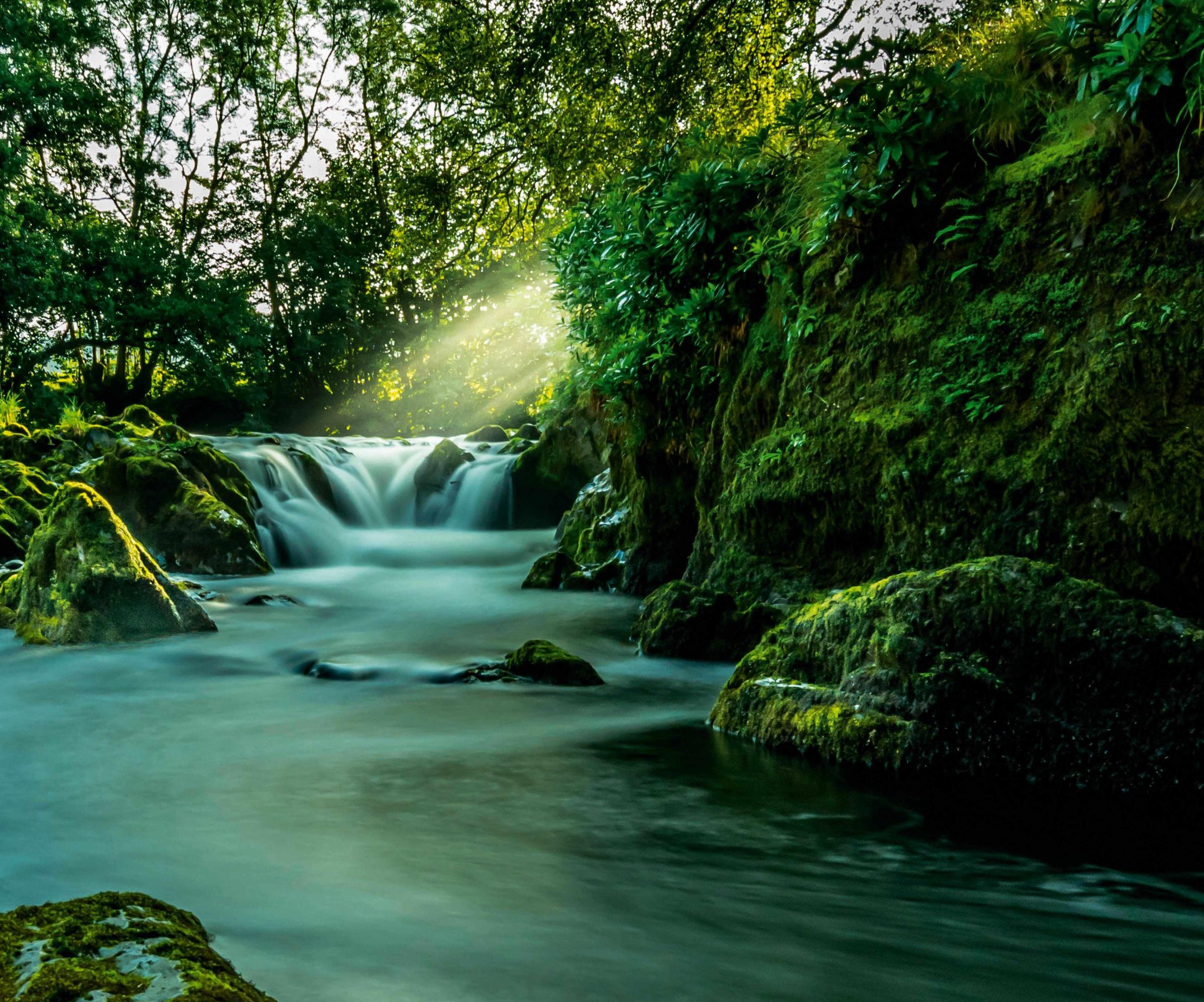
FALLING FOR SUMMER
Near the small village of Dinas Mawddwy in Gwynedd, the River Dyfi runs over moss-covered boulders as streams of sunlight illuminate Pen y Bont waterfall. Located in Snowdonia National Park, this is a watery landscape, where the Dyfi is joined by the rivers Cywarch and Cerist and salmon still lurk. The 30-mile-long Dyfi is considered by many to be the dividing line between north and south Wales, as it forms the natural northern boundary to Ceredigion.
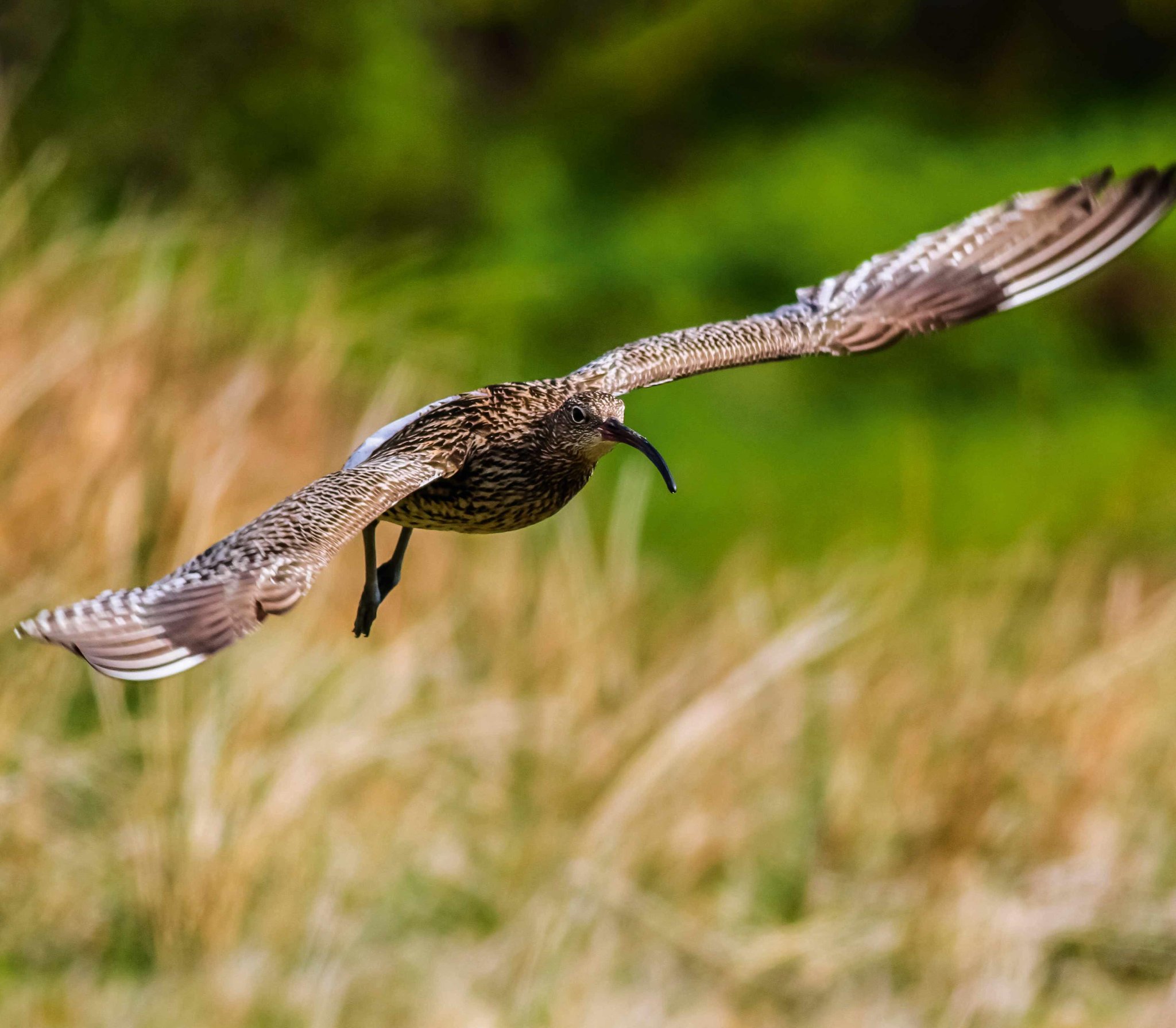
CURLEW CONSERVATION
The largest European wading bird, the curlew spends summer on the moors. Sadly, this distinctive bird, with its bubbling call and long, down-curved bill, is endangered. In May, to help expand the bird’s breeding range, the largest translocation of curlew eggs ever undertaken took place, with 120 eggs transported from the Yorkshire Dales to south England. Five Yorkshire estates with healthy breeding populations provided the eggs; once hatched, the chicks will be raised in special pens before being released.
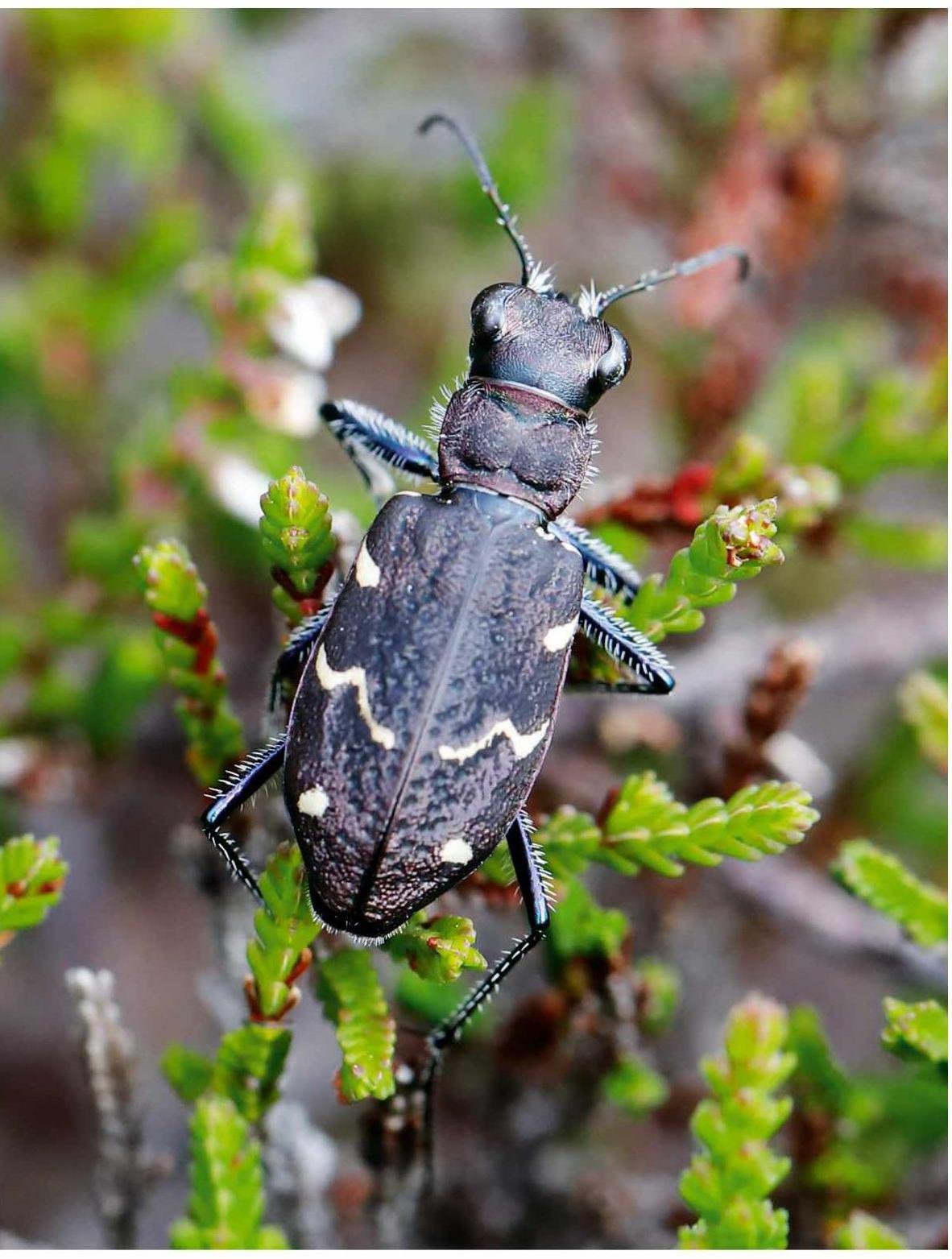
SUPER HAVEN
A rare heath tiger beetle perches in its traditional Dorset stronghold at the Purbeck Heaths National Nature Reserve. This first-ever super reserve was created in 2020, when 3,400 hectares of priority habitat were knitted together, creating a mosaic of lowland wet and dry heath, valley mires, and acid grassland. The National Trust is now working to create a 1,370-hectare ‘savannah’ at Dorset’s Purbeck Heaths, on which roaming animals will graze as they would have done millennia ago. Find out more in John Craven’s article.
EVENTS
Step back in time
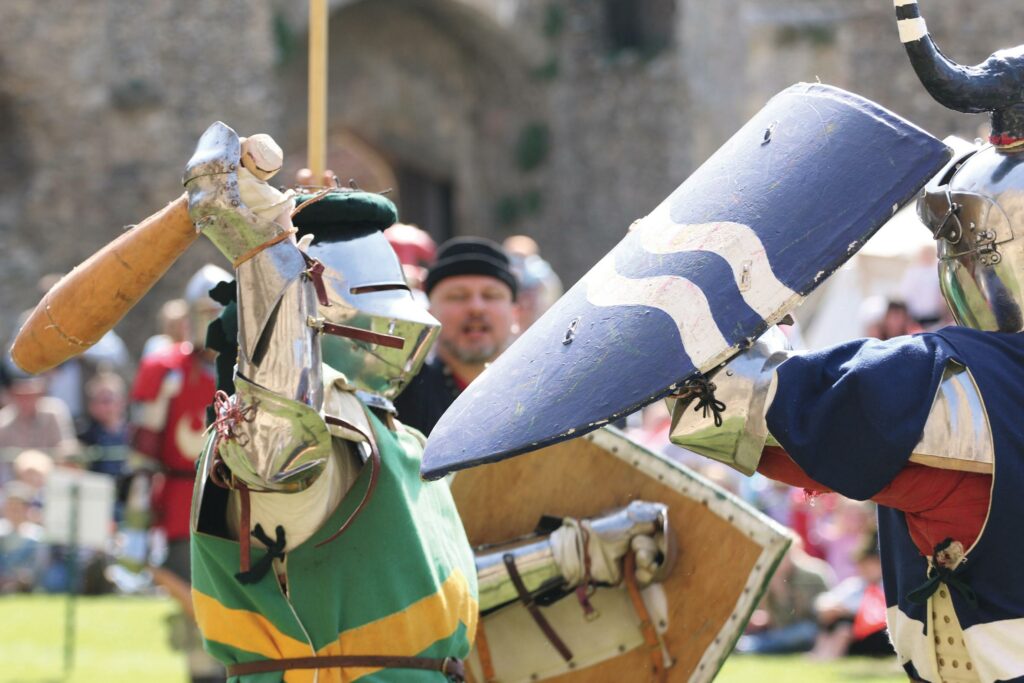
Join English Heritage this summer for a host of exciting, time-travelling events, from legendary jousts and knights’ tournaments to great medieval sieges.
All is quiet in the Suffolk market town of Framlingham. But then, the whirr of an arrow, the clash of clubs on shields, the bellow of a knight. Thankfully, you are not under attack – rather, the town’s 12th-century castle is putting on a show. Visit on 5–6 August for Clash of Knights to witness a thrilling battle between noblemen amid the atmosphere of a medieval encampment. There are dozens of history-themed events taking place across the country. Experience the Legendary Joust at Pendennis Castle in Cornwall (1–3 Aug), Medieval Mischief at Warkworth Castle in Northumberland (1–2 and 15–16 Aug) and Roman Falconry at Birdoswald Roman Fort (12–13 Aug) in Cumbria, among others. Find out more at english-heritage.org.uk.
GET INVOLVED
Missing Pieces Project

Did you know there are 400,000 protected places across England, most of which are linked in some way to our past? The Missing Pieces Project is all about uncovering the hidden histories of these special places. Historic England, which launched the project this spring, believes no single person or organisation knows the whole story of a place, so is inviting you to share pictures and stories of your most memorable and significant spots, from buildings and monuments to gardens and battlefields. To share your story on the National Heritage List for England, visit historicengland.org.uk/listing/missing-pieces.
CUMBRIAN COAST
Enlightening art
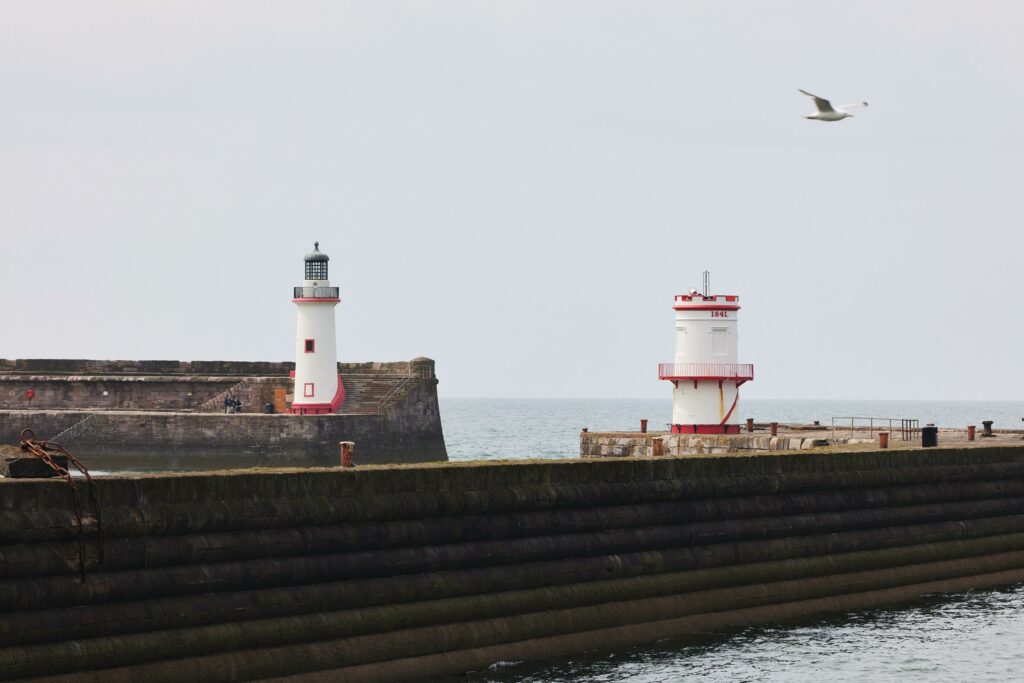
We associate lighthouses with the visual rather than the aural, but Turner Prize-winning artist Susan Philipsz has flipped the script at Whitehaven Habour in Cumbria. Every day between 6am and noon, ‘By Sound Near Seawall’, a recording of conch shells being blown, rings out from West Pier Lighthouse. It’s an hourly reminder of the town’s historic trade links to the slave trade in Haiti, where conches were once blown to call enslaved labourers in from the fields. The installation is part of Deep Time, a public art programme celebrating this part of the Lake District coast. deeptime.uk
Plodcast highlights this month
Get active in nature
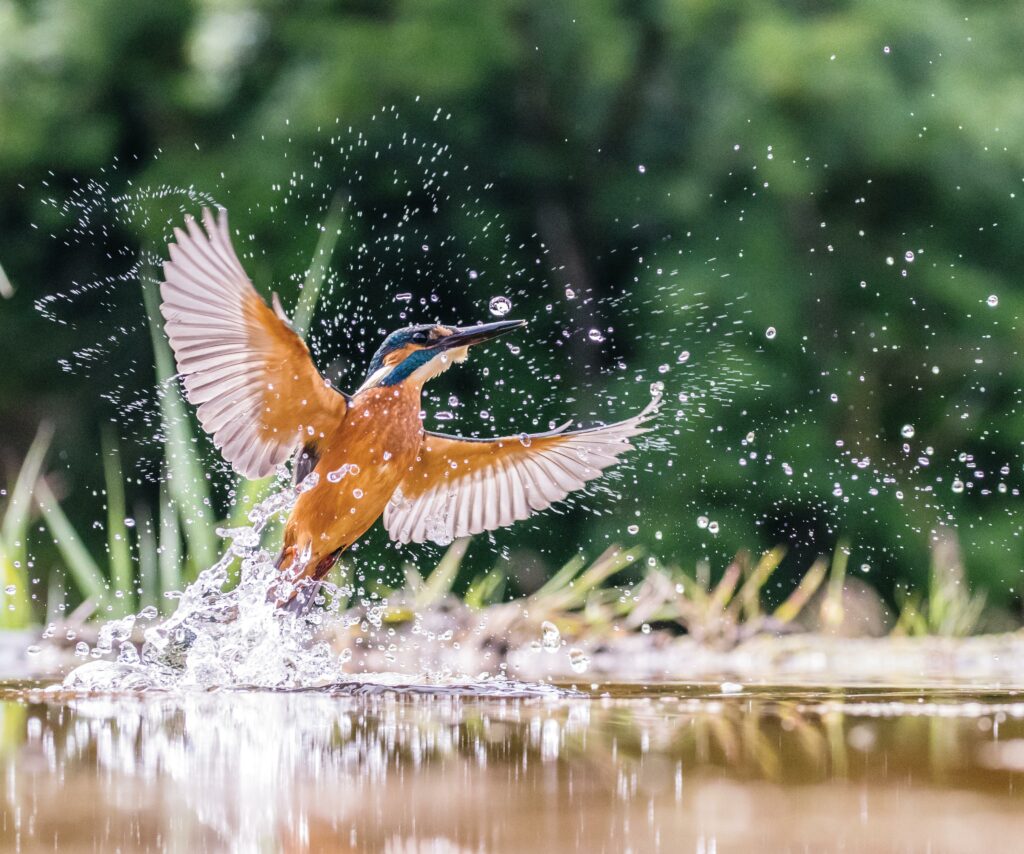
The Plodcast is BBC Countryfile Magazine’s nature and countryside podcast – with a fresh adventure published every week. Listening highlights this month include:
1. Join our special adventure in search of kingfishers for our 200th episode.
2. Learn how the natural world inspires music in episode 201.
3. Drift downstream while paddleboarding on the River Wye in episode 202.
Find the Plodcast on Apple, Spotify and all good podcast providers.
MAKE DO AND MEND
HOW TO REPAIR A FABRIC TEAR
Summertime can be hard on your outdoor gear, and no matter how well you care for it, you are going to get a hole or tear from time to time. In this guide, we reveal one of the easiest stitches for repairing almost any small hole, be it a rip in your jeans, a tear on your rucksack strap or a hole in your favourite walking shirt.
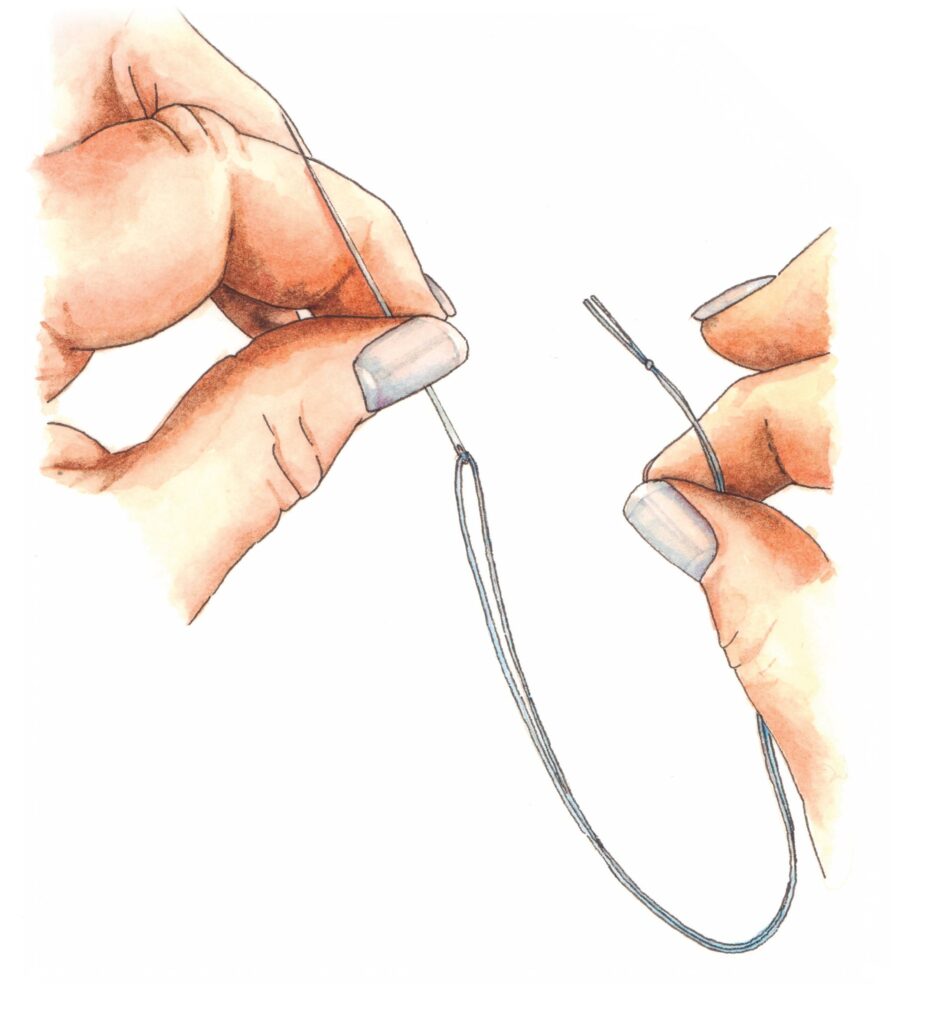
1. Choose a thread that matches the colour of the fabric. Cut a length of thread – about 60cm for a small hole (2–3cm). Pull the thread through the needle to create two equal lengths, then tie a knot in the end.
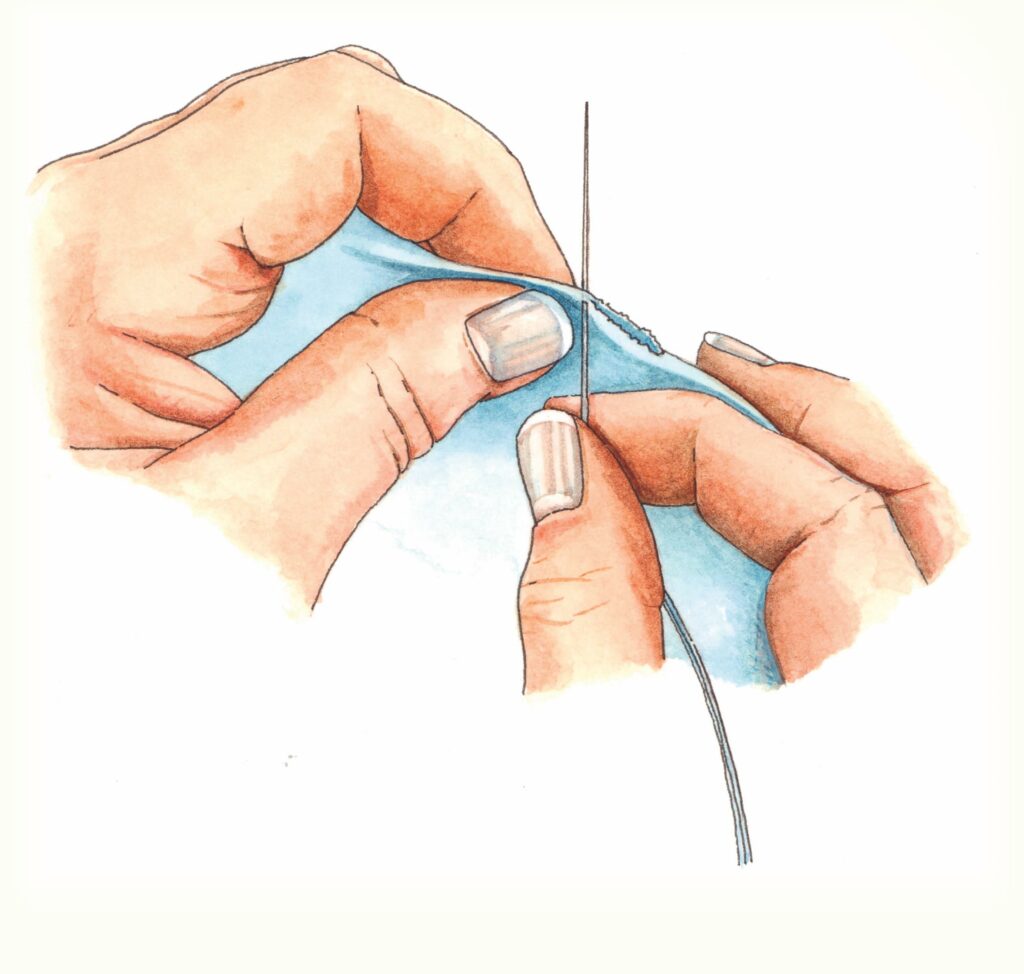
2. Turn the garment inside out then bring the fabric around the hole together. Insert the needle at one end of the hole, a couple of millimetres from the edge. Return the needle through the same hole, essentially tying a knot in the thread and fabric.
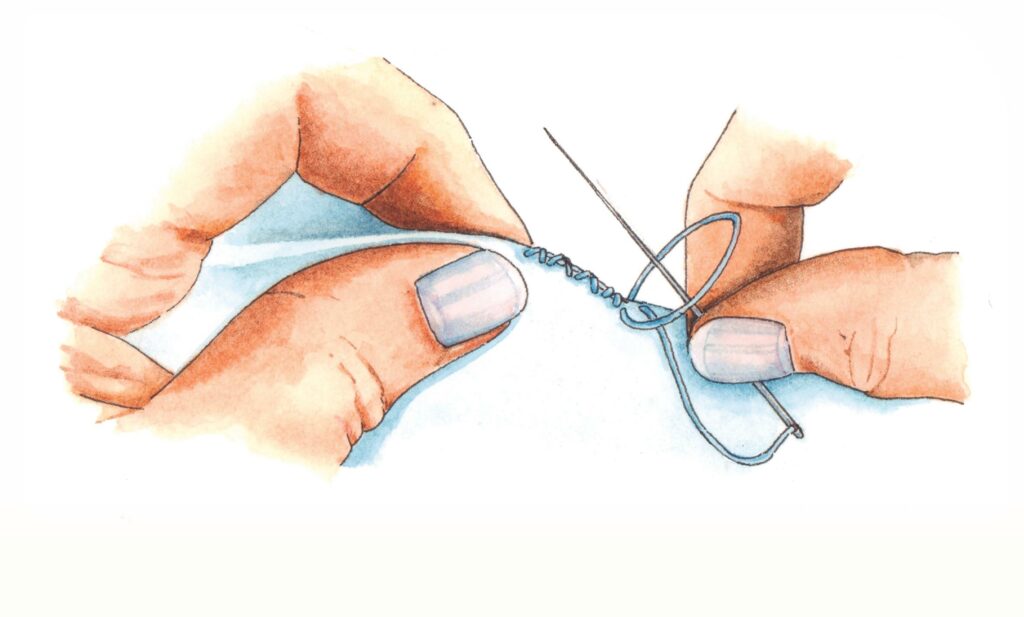
3. Now start to stitch the hole. Insert the needle into the fabric on one side of the hole, picking up a bit of the fabric on the other side to pull it together. Return to the first side and repeat the stitch. Continue to the end, then sew in a knot.

4. Cut away any loose threads, turn the garment the right way round and you’re good to go. Note: use a low gauge needle (thick) for tough fabrics and a high gauge (thin) for soft fabrics.
ID GUIDE
SUMMER BUTTERFLIES
Britain is home to 59 species of butterfly, all of which play an important role in pollination. Most species enter a dormant stage in winter but, come summer, they are at their most abundant – and active. In our spotter’s guide, we take a look at 12 spectacular species. How many can you see this summer?
COMMON BLUE
Polyommatus icarus
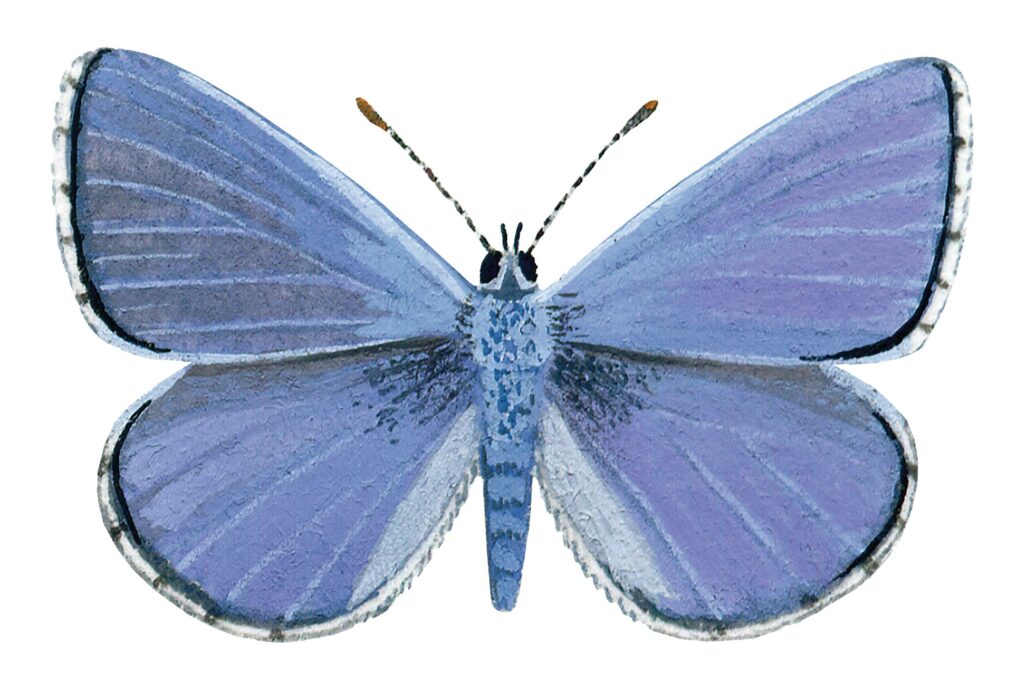
Our commonest blue, occurring in various grassland habitats, including road verges and industrial wasteland. It’s hard to separate from other blues, especially the brown females. If it attacks another butterfly, it’s a male brown argus, not a female common blue; in the males, the underside markings often show through the blue upper sides, unlike in other blue males. There are early and late summer broods, and it breeds mainly on common bird’s foot trefoil. Illustrations by Chris Shields
LARGE SKIPPER
Ochlodes sylvanus
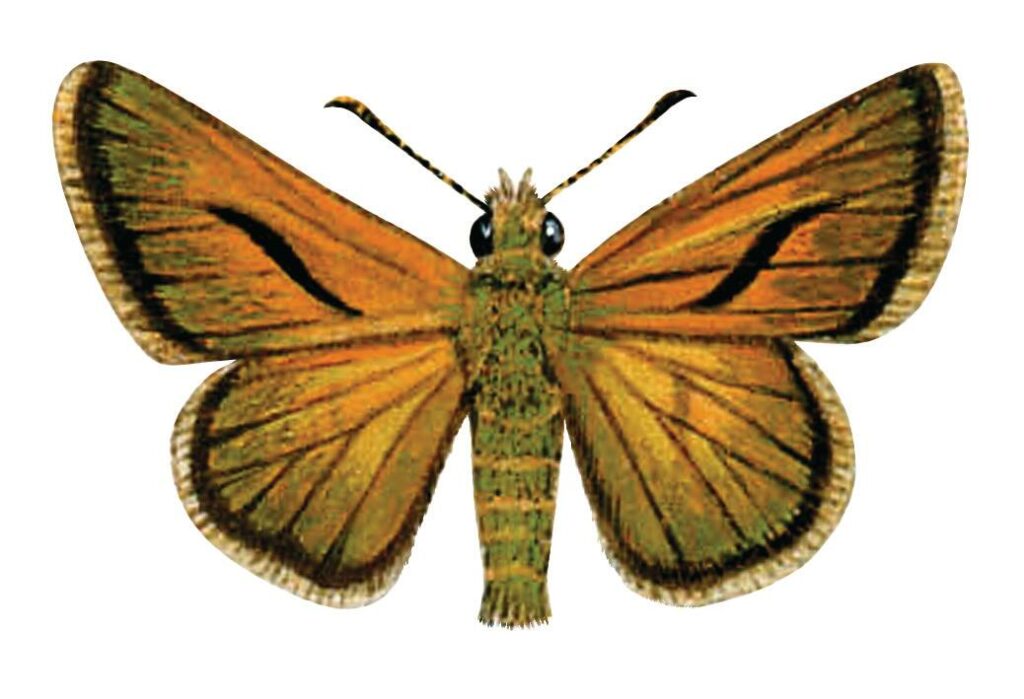
This jump-jet of a butterfly is capable of rapid vertical take-off and whizzes around at the highest speeds. The hotter the summer sunshine, the faster the dull-orange males fly as they dispute territorial possession. No flowering bramble patch is complete without a stroppy male large skipper. This is our largest and most widespread skipper, which is essentially an insect of rough, flowery and well-sheltered grassland, where the larvae feed on broad-leaved grasses and sedges.
SMALL SKIPPER
Thymelicus sylvestris
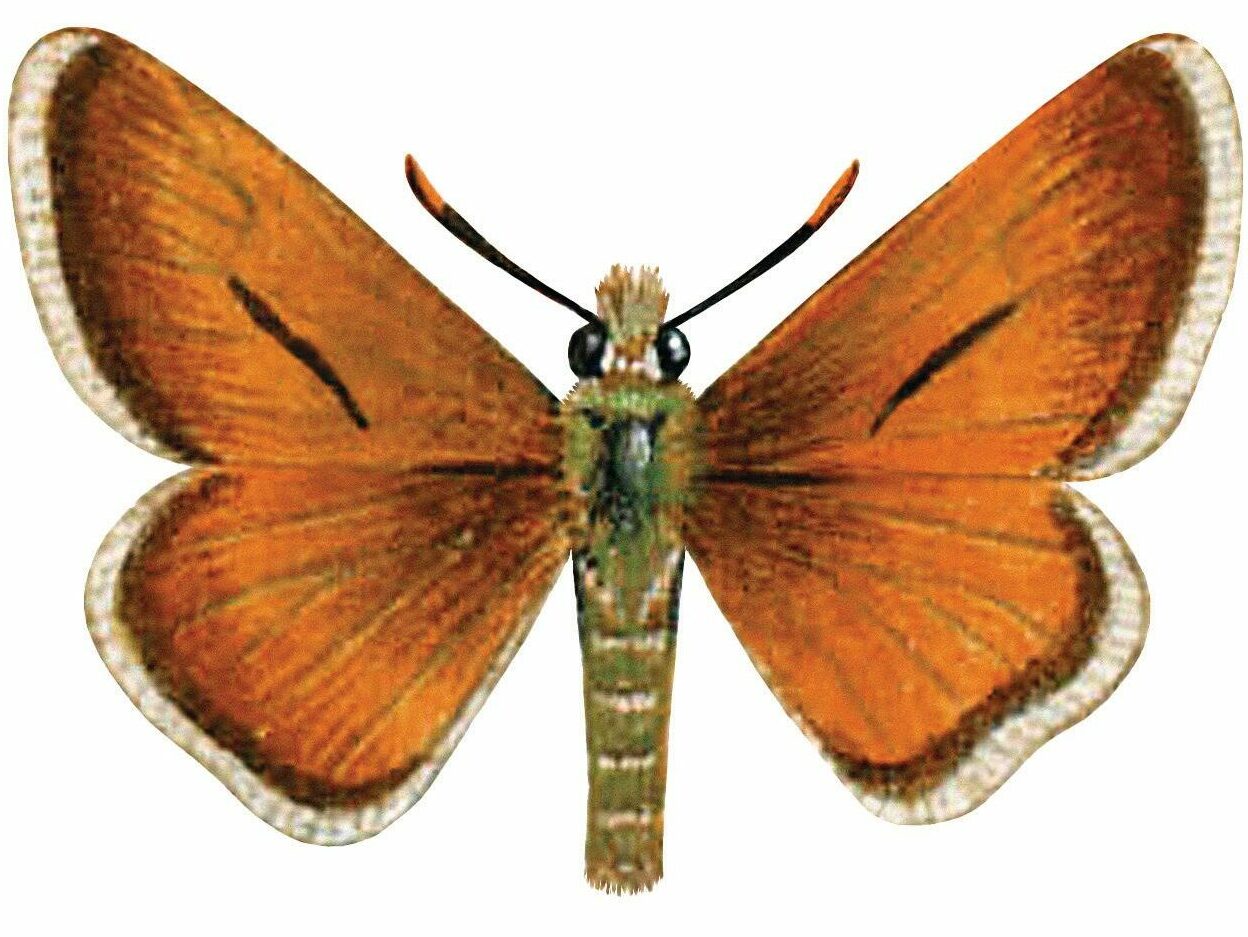
This small, golden skipper is easily confused with the less common Essex skipper. Technically, the undersides of the small skipper’s antennae are orange, while those of the Essex are dipped in black ink. The best trick is to look for the presence of Yorkshirefog grass, on which nearly all small skipper colonies are based. Both species occur in colonies among rough grassland, flying during midsummer, and visit flowers such as thistles, knapweed and ragwort.
SMALL COPPER
Lycaena phlaeas
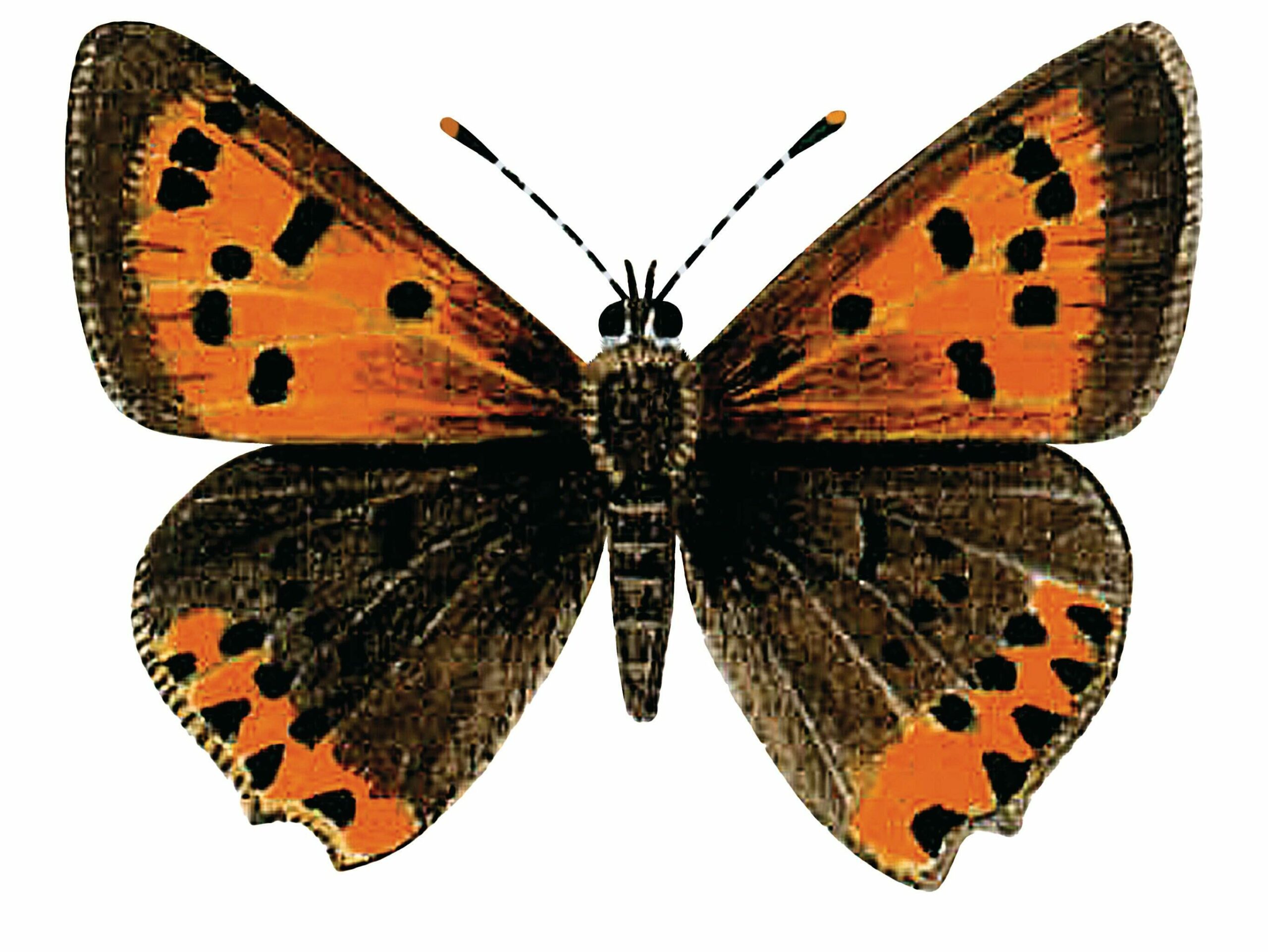
This tiny but pugnacious fiery dart of a butterfly occurs in grasslands, heaths, moors and dunes across our islands. There are spring and high summer broods and, down south, an autumn brood after warm summers. It can abound during August and September in hot summers. It breeds on docks and sorrels, favouring tiny plants of sheep’s sorrel growing in dry, sandy and acidic soils. On neutral and calcareous soils, common sorrel is favoured, almost invariably in warm microclimate situations. A ‘bare ground’ specialist.
GATEKEEPER
Pyronia tithonus
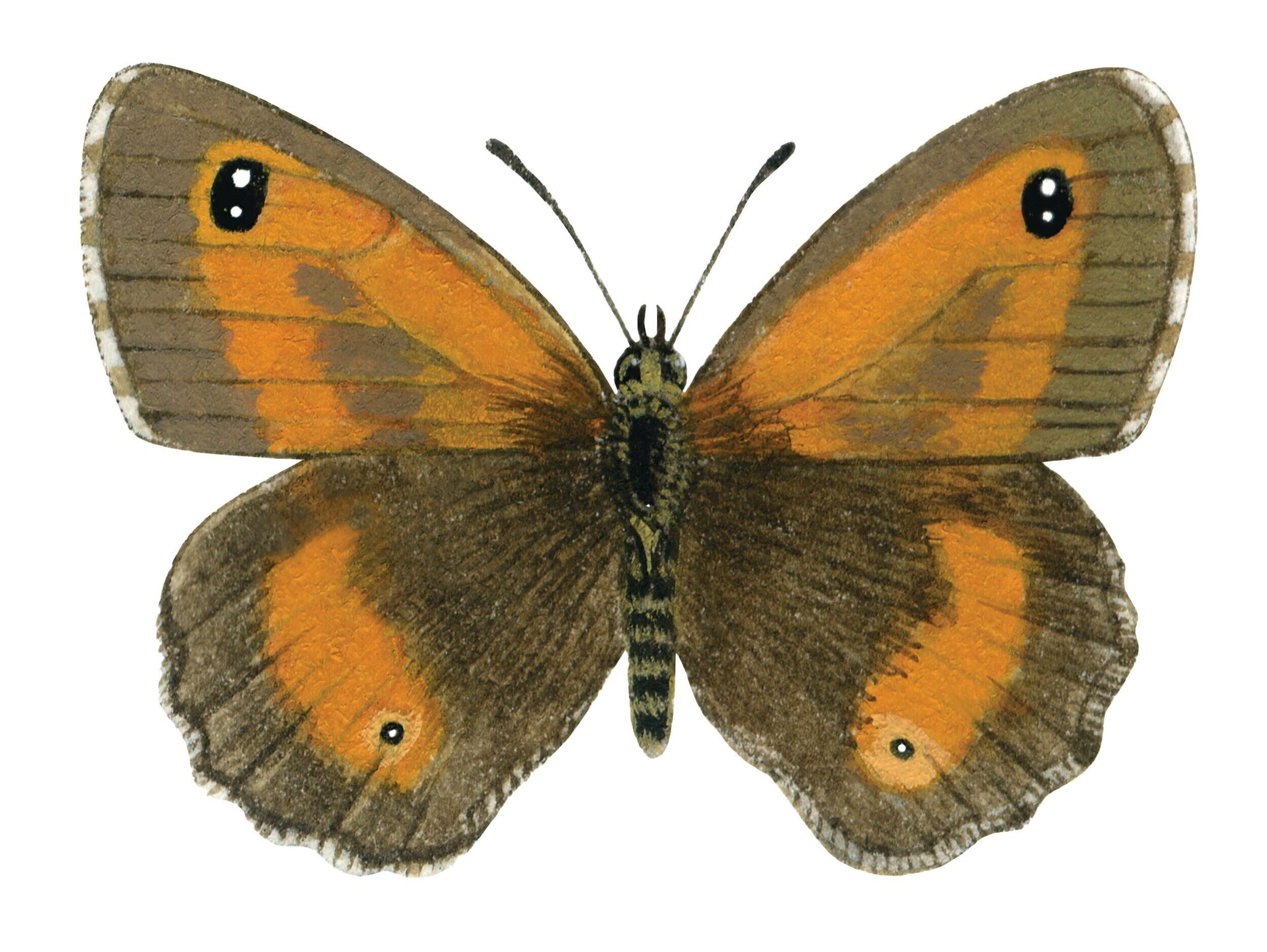
Formerly called the hedge brown, this is a scrub-edge butterfly of July and early August in southern Britain, a smaller, more orangey version of the meadow brown. Eggs are laid on fine grasses along sunny edges of scrub patches, hedges or bramble patches. Adults feed peacefully on flowers, favouring bramble and marjoram. The males are remarkably well-behaved, quietly courting the passive females. Tip: look for the two white spots in the large black dot in the forewings, and the uniform mid-brown wing borders.
HOLLY BLUE
Celastrina argiolus
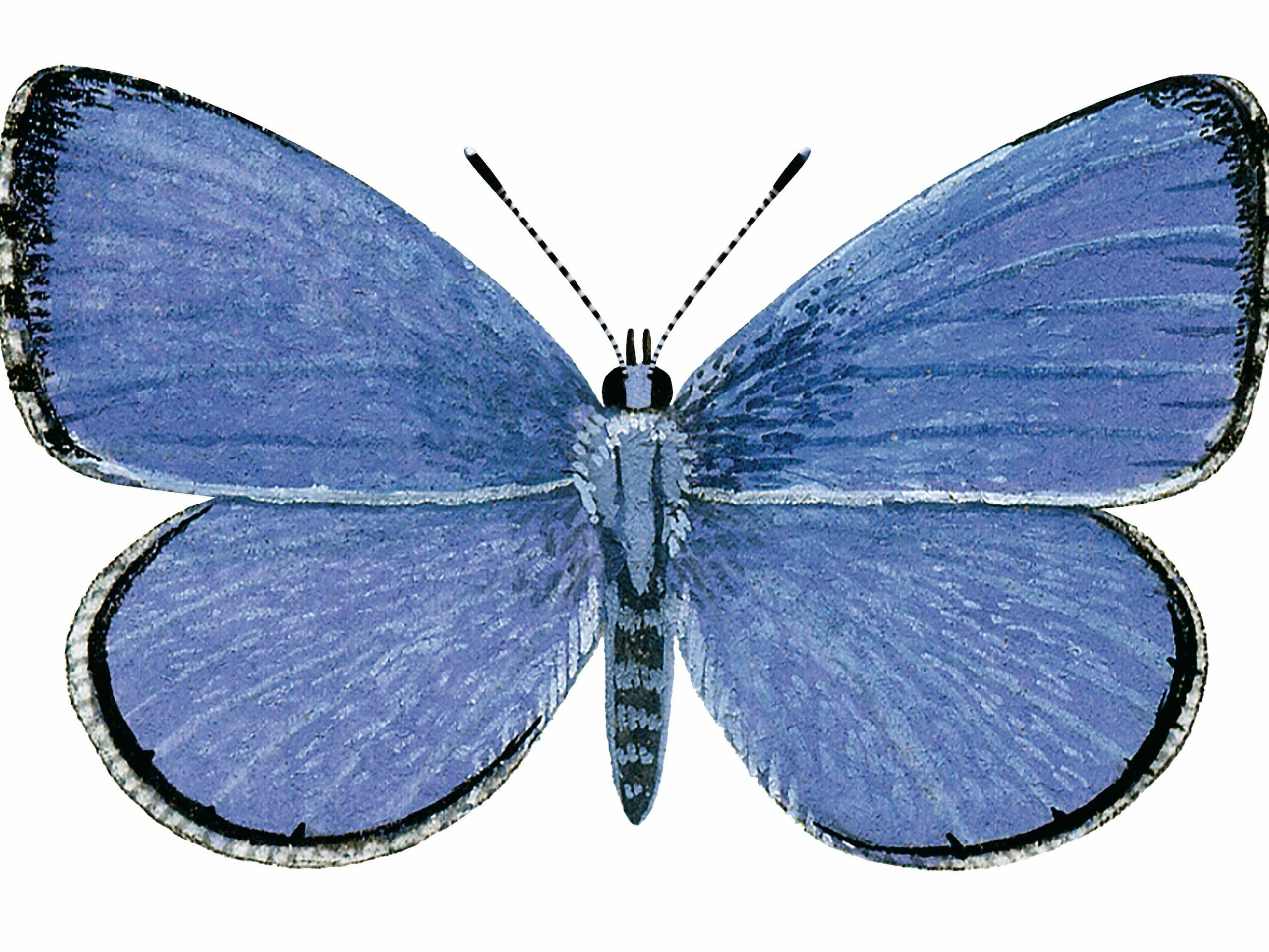
The blue butterfly most commonly seen in gardens and towns, and the only blue that readily flies around bushes, this can be identified by habitat and habit. It used to be called the azure blue, due to its tone, and the wing undersides lack orange spotting (separating it from the common blue). It occurs in two broods, in spring and high summer, though numbers vary greatly from year to year. Larvae feed on the developing fruits and berries of shrubs, particularly holly in the spring and ivy in late summer.
SMALL TORTOISESHELL
Aglais urticae
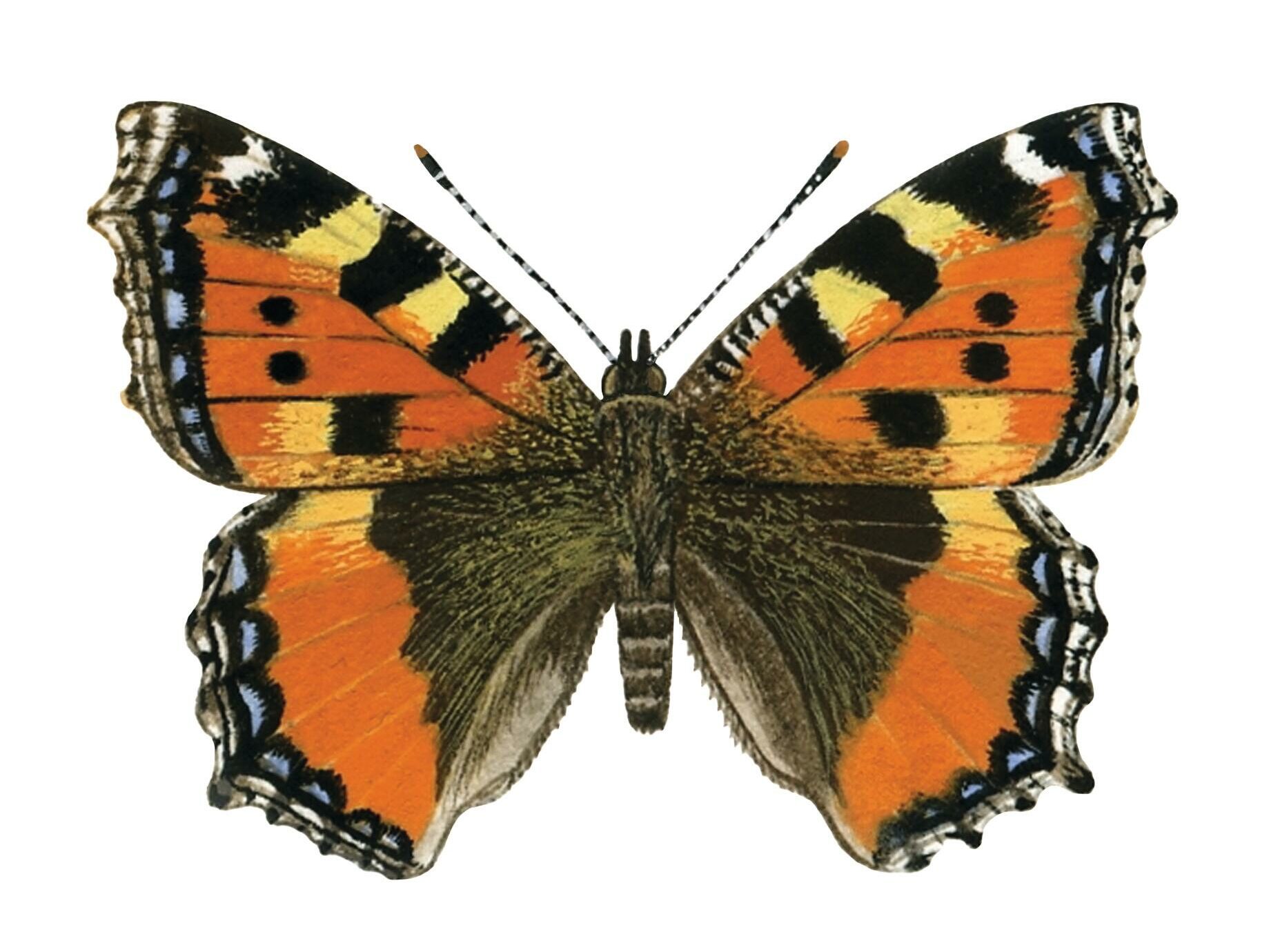
This distinctive yellow and orange butterfly (with muted undersides) was our most quintessential late-summer garden butterfly, regularly claiming the month of September as its own, feeding collectively on flowers such as Michaelmas daisies and Sedum spectabile prior to hibernation. But in recent years numbers have crashed – perhaps because of a newly arrived fly that parasitises the gregarious larvae in summer.
MEADOW BROWN
Maniola jurtina
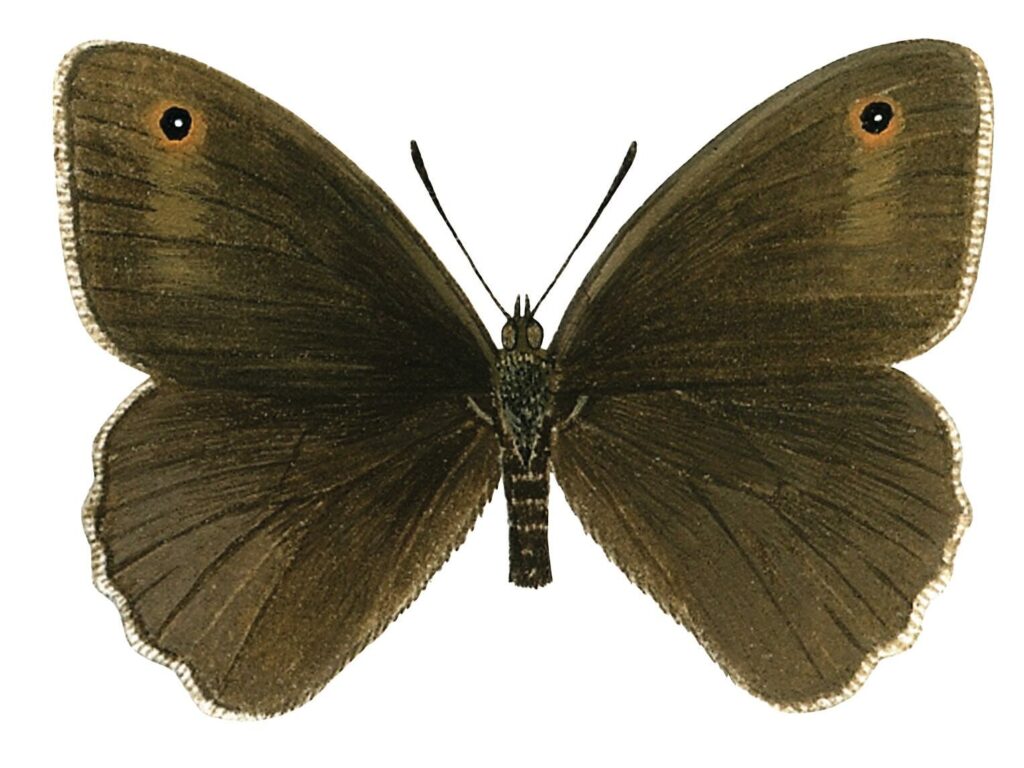
The archetypal meadowland butterfly, which bobs among grass heads all summer long throughout lowland Britain. Its nocturnal larvae feed on a wide range of native grasses, but avoid rye grass, the standard grass of modern farm fields. Consequently, the meadow brown is nothing like as common as it used to be. It can still occur in profusion, jostling for position on brambles and thistles along woodland rides and in other grassy places.
BRIMSTONE
Gonepteryx rhamni
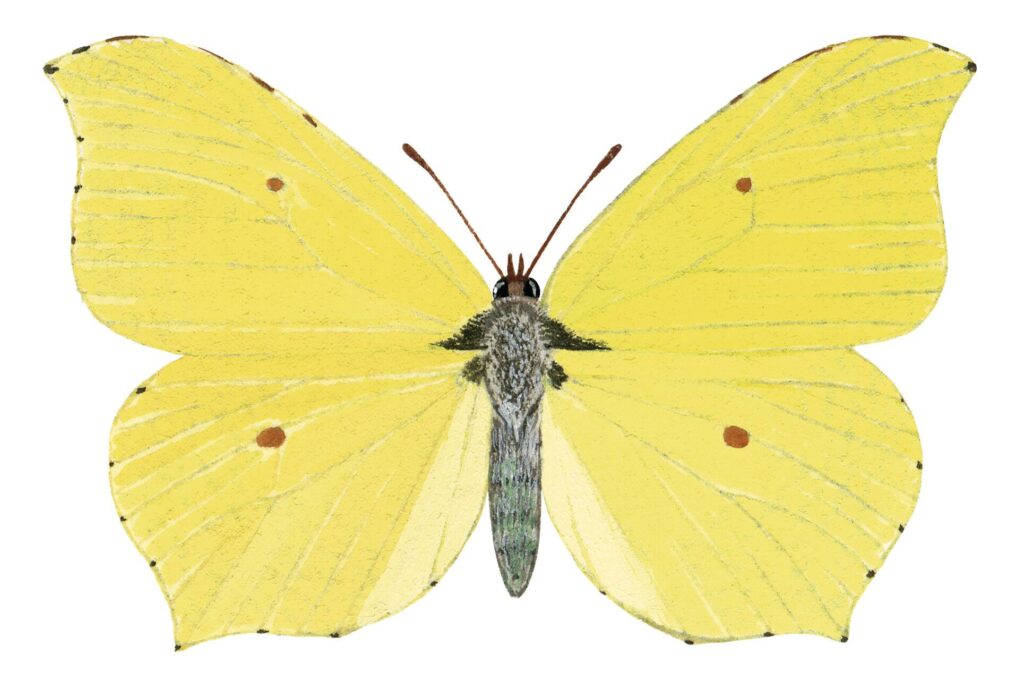
The original ‘butter-coloured flie’, widespread in much of southern Britain, is a habitual wanderer of woods and lanes. The golden males are harbingers of spring, having overwintered in bramble or ivy tangles, unmated. The paler females soon pair up, and then wander off in search of the buckthorn bushes on which they lay their eggs. The butterflies emerge in July, feed, then go into hibernation to grace the next spring.
MARBLED WHITE
Melanargia galathea
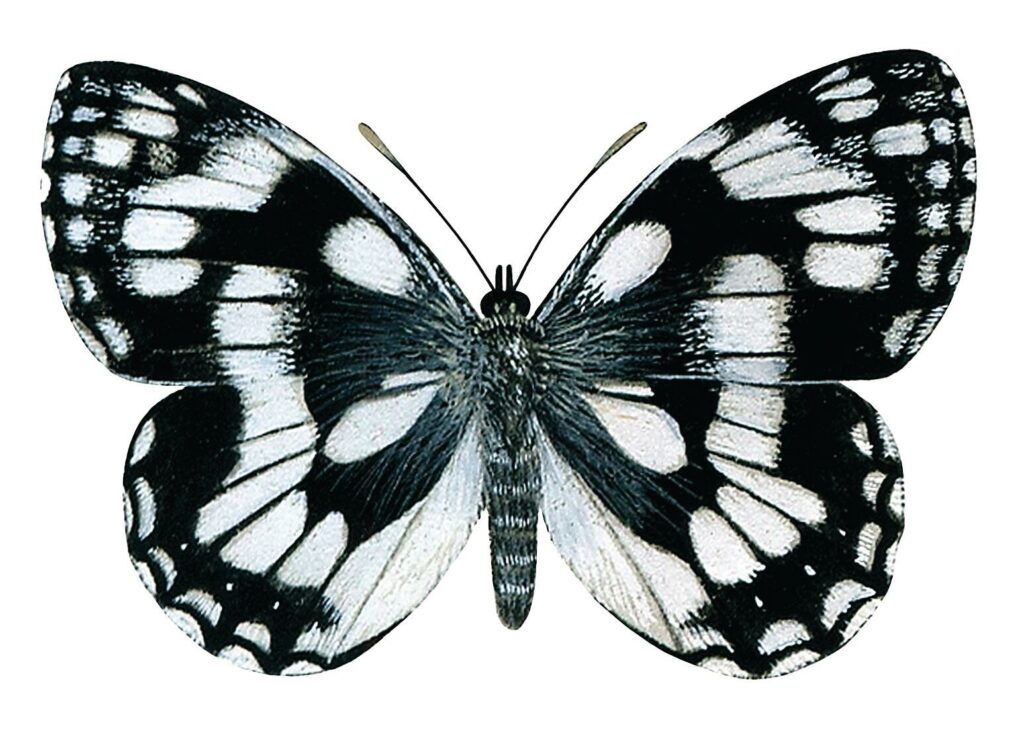
Our easiest butterfly to identify, evenly chequered in black and white. Flies in midsummer, occurring in tight-knit colonies in rough, usually dry grasslands. Both sexes feed avidly from flowers, favouring knapweeds and thistles. In the evenings, they bask communally in clumps of sturdy vegetation, before roosting in loose aggregations. A southern species, steadily expanding its habitat range and moving north.
PEACOCK
Aglaisio
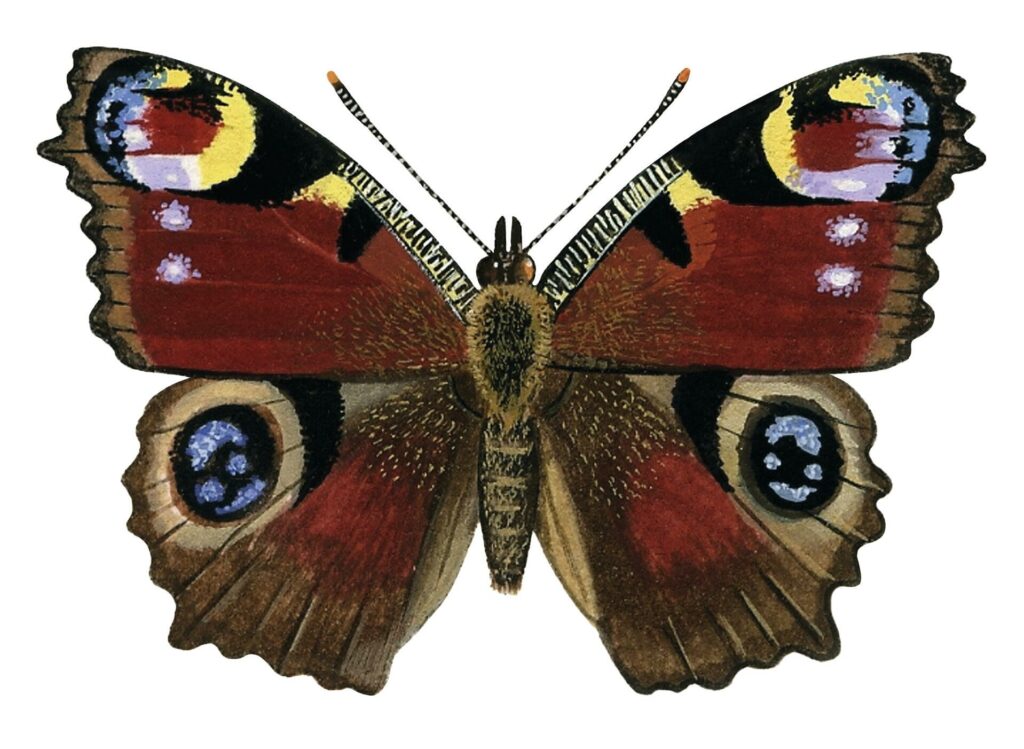
A large butterfly, easily identified by its peacock-eye RAF wing markings. The black wing undersides tell of a butterfly that overwinters in dark places, such as sheds and log piles. In spring, the males set up territories, into which unmated females stray. Eggs are then laid on nettle patches in warm situations. The spiny black caterpillars feed together, then wander off to pupate, emerging as butterflies from midsummer into late July.
LARGE WHITE
Pieris brassicae
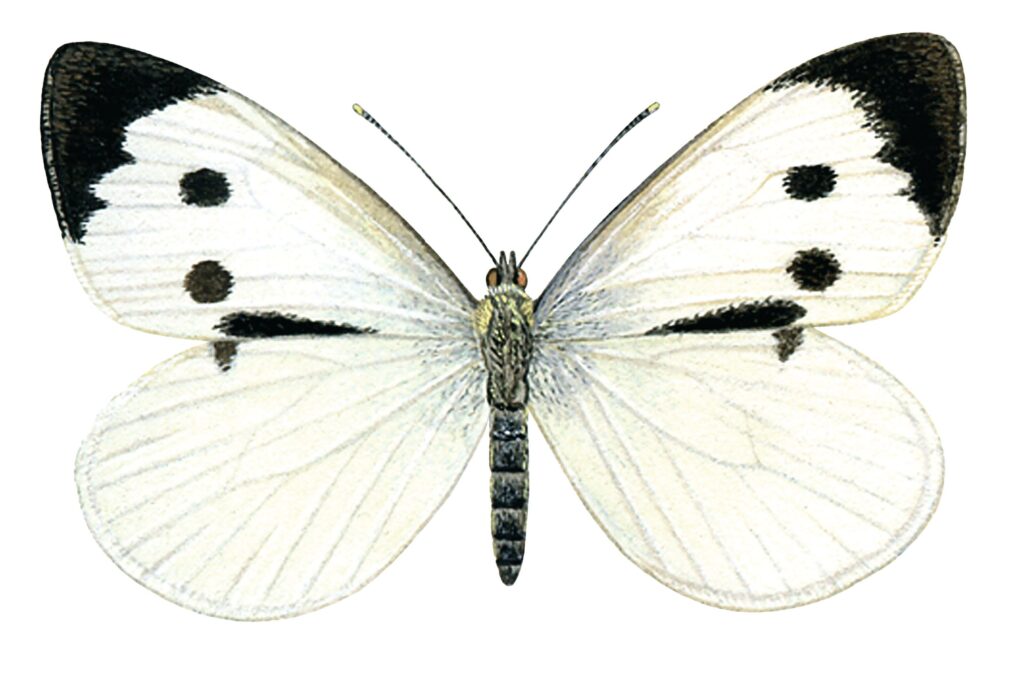
Our so-called cabbage white consists of two similar species, one smaller, one larger – though there are small large whites and large small whites. Both breed on a wide range of wild and cultivated members of the cabbage family, including nasturtiums. Small white larvae are solitary and green; large white are gregarious, black and yellow. August is the main month for cabbage whites, with both species widespread in lowland Britain.
RECIPE
YARROW AND HONEY MULE
The smell of honey-scented yarrow flowers one hot summer day inspired this medicinal take on a mule cocktail. Not only does it taste good but it helps soothe coughs and colds, too. Adding fresh yarrow leaves and ginger will give the cocktail an extra ‘zing’, but it is still pretty punchy without them. My friend Antonia and I enjoyed these cocktails one evening in her allotment – it felt appropriate when we were surrounded by herbs and flowers – and they made the cycle home quite interesting, too!
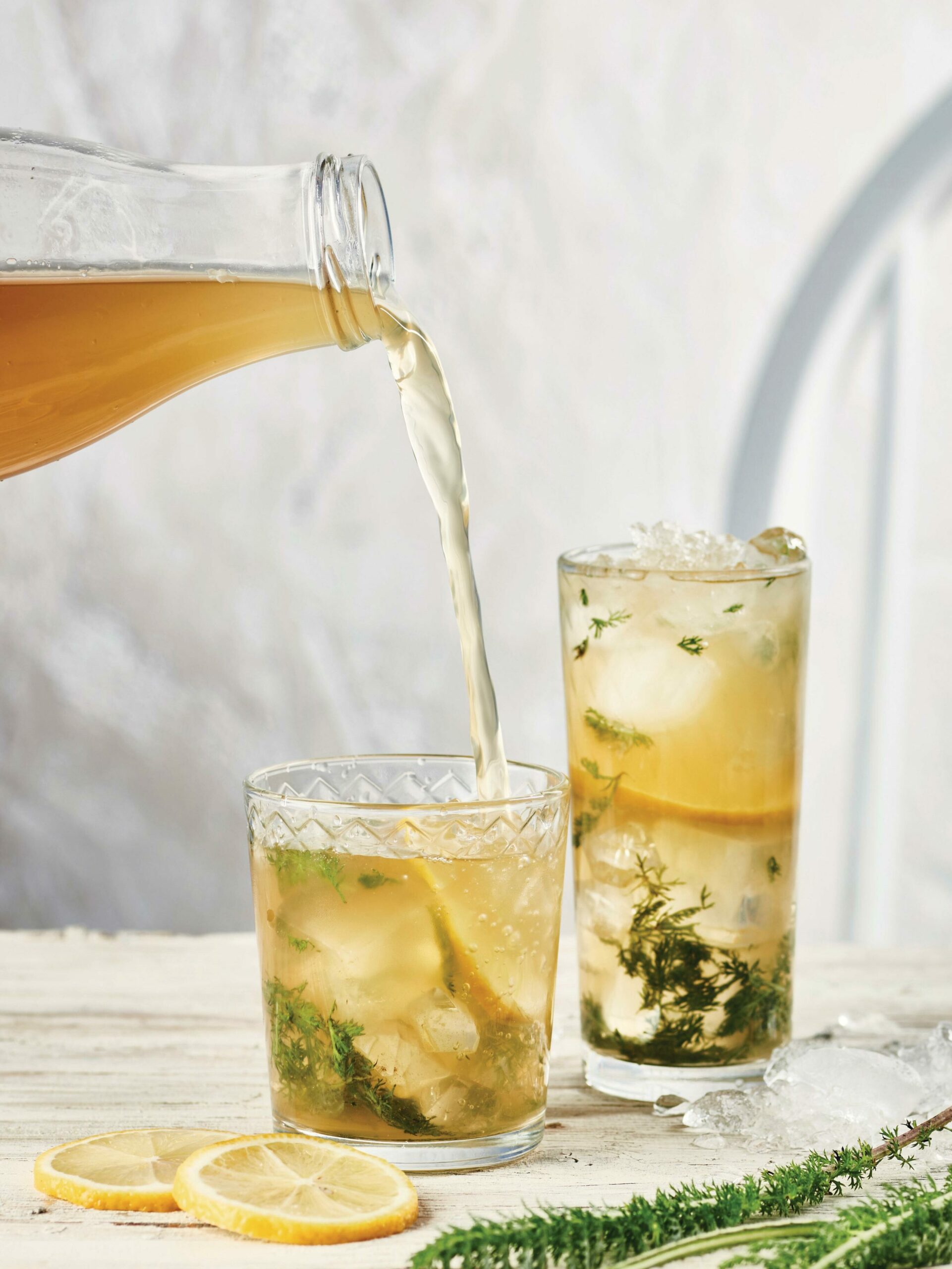
SERVES 4
GLUTEN-FREE AND DAIRY-FREE
INGREDIENTS
4 tbsp yarrow leaves, taken off the stem and chopped (optional)
1 tsp lemon juice
1 tsp grated fresh ginger (optional)
125ml vodka, plus 1 tsp
100ml yarrow flower syrup (below)
1 tbsp honey
400ml sparkling water
To serve: ice cubes, lemon slices
METHOD
1. In a pestle and mortar, mash together the yarrow leaves (if using), lemon juice, grated ginger (if using), and one teaspoon of vodka.
2. Pour the yarrow flower syrup and remaining vodka into a jug, add the honey and stir until dissolved. Add the mashed yarrow-leaf blend (if using) and the sparkling water, then pour into glasses garnished with ice and lemon slices.
YARROW FLOWER SYRUP
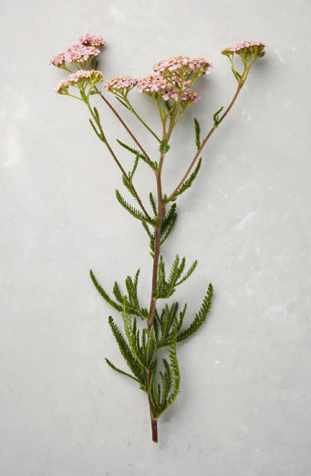
From the moment the flowers are steeped in hot water, I fall in love with the scent of this syrup. It smells almost like menthol – or is it liquorice? I can’t quite make up my mind.
INGREDIENTS
30g yarrow flowers, chopped
450ml boiling water
300g light brown sugar
METHOD
1. Place the chopped flowers in a heatproof bowl and pour the boiling water over them. Cover and leave overnight or for 24 hours.
2. Strain the liquid through a sieve into a saucepan. Add the sugar and gently heat, stirring, until the sugar has dissolved. Bring to the boil and simmer for 10 minutes before leaving to cool, then decant into sterilised bottles. Keeps for up to three months in the fridge.
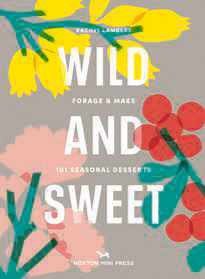
Recipes from Wild and Sweet by Rachel Lambert (Hoxton Mini Press, £25).